Media | Articles
Vision Thing: Feel the Sehnsucht
Isn’t strange how the Germans, of all people, have within their language some words which manage to capture something universal that doesn’t translate directly into English? Schadenfreude, for example—the joy experienced in the misfortune of others. I have recently learned that sehnsucht is not just the title of bombastic metal pounders Rammstein’s second studio album, as it means a melancholic yearning or desire for something unattainable.
And that’s something I used to feel regularly thumbing through expensively imported American car magazines in the ’90s.
It’s been said that in our interconnected world, anything is available from anywhere for a price with just a few taps. Really? I’ve yet to find a U.K. supply of the hazelnut coffee creamer I enjoyed in America, and I can’t find a replacement aerial (that’s an antenna, for you stateside readers. —Ed.) for the Mondial either, so I’m not sure that’s totally true. And what’s true for me also applies to you.
Thanks to the 25-year import rule, no amount of money will make any of these design picks legal to drive in the United States. Your U.K.-based author, however, can go to a specialist importer today and, for £69,950 (ahem, $84K) drive home in a 2021 Ford Bronco Outer Banks.
Alpine A110 (2017–present)
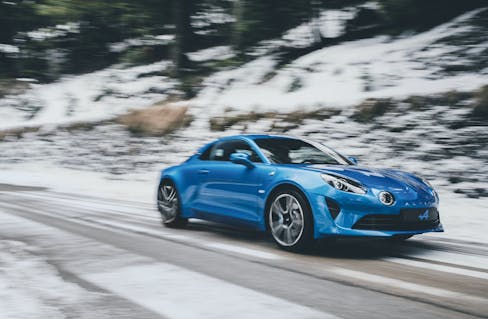
Any decent French mid-range vehicle from the last fifty years or so will have certain attributes. Chic design, a lusty torque curve, and well-damped, long-travel suspension. When the Citroën Berlingo van first appeared at the courier company I was working for in the late ’90s, the lucky drivers who got one marveled at its ability to keep up with much hotter machinery on a bumpy British B road, riding the turbodiesel torque between third and fourth gears.
Marketplace
Buy and sell classics with confidence
Jean Rédélé had been making go-faster Renaults for years and rallying them with a not-inconsiderable degree of success. In conjunction with famed Italian designer Giovanni Michelotti, the pair utilized the then-revolutionary material of glass-reinforced plastic (GRP, a.k.a. fiberglass) to come up with a series of small berlinette (coupes) culminating in the original A110 of 1963. This lightweight yet immensely strong car proved to be a formidable rally weapon; after Renault acquired the company in 1971, it won the inaugural World Rally Championship in 1973.
There were later models, the A310 and 610 (which morphed into the ’80s GTA, a kind of French 911) but it’s the original A110 from which the new one takes inspiration. Launched in 2018 and just tweaked for 2022, the first thing you notice upon seeing one in the metal is just how compact it is. A handy 7 inches shorter and 600 pounds lighter than a Cayman, the modern A110 is tiny.
But don’t think this is a compromised widowmaker like an Alfa 4C. Coupling that traditional French loping ride with a boosty 1.8-liter four-cylinder engine swiped from the Megane RS, turned 90 degrees, and stuffed behind the seats, the Alpine pours itself down the road. Think “French Lotus” with better luggage accommodation—it’s like a Boxster/Cayman with front and rear trunks.
Better yet, the Alpine is sensational to look at, with proportions that are muscular but not aggressive and with wonderful detailing. The spotlights are an object lesson in how to integrate additional illumination, and the subtle Tricolore badges inside and out are a nice touch of French pride. The 21st century A110 captures the spirit of the original car without being beholden to it. It’s priced sensibly at £51K—about $61K, but worth noting that the first number is an out-the-door price including taxes. If I were to have one of these, I’d even forgo my traditional black for that beautiful Alpine Blue, a color for which car the looks tailor-made.
I would advise you to get the base version, as it does without the carbon-fiber aero bits with which the spicier versions are afflicted. If it’s good enough for Gordon Murray, it’s good enough for you and me. But I suspect the reason you can’t buy one in the first place is because Renault itself has no dealership presence stateside. (Homologation nonsense isn’t the issue, because the Alpine is also available in Japan and Australia.)
Jeep Avenger (2023)
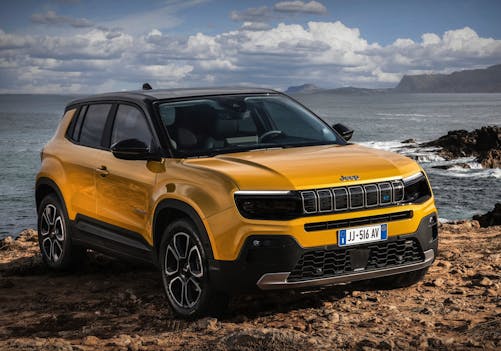
Now we’re getting in mirror-universe territory: Europe getting a Jeep that’s not available in the U.S.? More earth shattering than that, that Jeep is electric-only (for now—we’ll come back to this point).
Since the YJ Wrangler and XJ Cherokee spearheaded about the only successful European invasion of a U.S. brand nearly thirty years ago, Jeep has slowly but surely become a sort of semi-premium, slightly upmarket brand. Limited availability and heritage to die for has kept prices firm. Since recovering from the disastrous Cerberus years, Jeep has quietly but consistently turned out some handsome and credible vehicles. Now part of the bewildering Stellantis empire (which still sounds like an abandoned NASA white-paper project), Jeep has got its hands on Euro-specific platforms (courtesy of Peugeot/Citroën) and the first fruit of this intercontinental marriage is the Avenger.

Confession time: I have a soft spot for the Renegade, even though the D pillar is not quite right (it needs to angle forward a bit more, I think) but its compact size and cheeky ruggedness are fun, and we need more of that. The Avenger is about 6 inches shorter than the Renegade, sitting it squarely in the Euro B (in the states, the sub-compact) class.
What I like about the Avenger is how it keeps the modern Jeep design cues and applies them to an even smaller vehicle without becoming an overwrought mess. It has the seven-bar grille, the X-graphic taillights, and pronounced wheel arches, but each element is used in a way that’s appropriate for the Avenger’s smaller size. Designers made an effort to push the wheels to the corners so the vehicle has half-decent approach and departure angles. I particularly like the daytime running lights, which feel like a successful update of what Jeep tried on the pre-facelift KL Renegade.
Jeep is claiming a range of at least 250 miles for the Avenger, which feels optimistic for a 54-kWh battery. But internal-combustion (ICE) versions have been spotted testing. This sequence is known as design protection or, to the layman, as “hedging your bets.” For now, an EV is a non-starter for people without home or at-work charging options, so the inclusion of an ICE model is a prudent move.
Suzuki Jimny
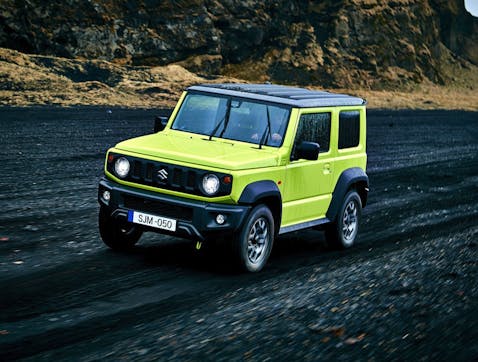
If Suzuki can build a new body-on-frame, solid-axle SUV, why couldn’t Jaguar Land Rover do the same for the 2020 Defender, cried the internet? A couple of good reasons. Suzuki is a much bigger company than JLR, which isn’t even in the top 20 OEMs worldwide. The second-generation Samurai was in production for 18 years, and the third-gen Jimny for 24. When you’re building a car for that long, you don’t need as much margin.
Customers who actually need real off-road ability know weight and size are the enemy. The Jimny is one of those cars whose design is an explicit function of its purpose. A totally honest and unpretentious car ready for work and play. There’s hardly any attempt to smooth off the rough edges of its capability in the name of comfort.
The flat body side and clamshell bonnet call back to the earlier SJ Samurai, but this latest Jimny is not really a retro design as I’ve seen it described elsewhere. It’s simple, functional, and modern without leaning into the cuteness factor that affects some Kei cars. It looks tough and capable without being overly aggressive. Back in the late ’80s and early nineties the SJ and its Vitara (Chevy Tracker) sibling became something of an inner-city fashion accessory, and the new one has done the same for the rural set. There’s a least two living in the frightfully well-to-do rural town where I live (along with at two Alpine A110s I see regularly).
Suzuki has managed the same own goal as Ford did with the Maverick, as both manufacturers massively underestimated demand. They simply could not build the vehicles fast enough. But Suzuki had an even bigger problem.
The Jimny’s bluff shape and draggy drivetrain meant the truck ran afoul of European emissions regulations, causing it to be withdrawn from the market in 2020 after only two years on sale. The solution, reintroduced for 2022, was to yank out the cramped rear seats and install a cargo partition. In the eyes of the law, these changes turned the Jimny into a commercial vehicle, which doesn’t have to meet the same emissions standards.
The Jimny’s list price is about £20K ($24K) but try finding one for that. Like the Maverick, delivery-mileage examples are going for a significant premium and are still in short supply, proving that a vehicle that nails a specific use-case will always be popular.
Dacia Duster
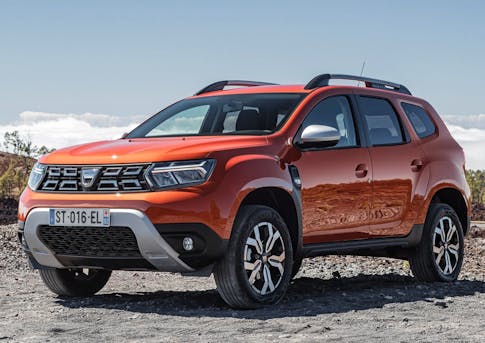
Dacia is a Romanian company that got its start in 1966 by buying up old Renault tooling and selling obsolete Renault 8s and 12s domestically under license. Since 1999 it’s been part of the Renault empire proper, though it remains Romania-based, selling around 500K vehicles annually.
Slotting into the unpretentious, value-for-money market occupied by Škoda (before the Czech company’s portfolio began getting expensive), the first Dusters appeared in the U.K. in 2012 in Whirlpool White with steel wheels and unpainted polypropylene front and rear bumpers for the eye-catching price of £8995 (a little under $11K).
Buyers walked into Dacia showrooms in droves and promptly walked out wondering where the touchscreen and automatic transmission were. Realizing it had gone a bit too minimalist in its approach to options, Dacia soon revised the Duster with trim uplifts and additional equipment.
Want to tell whether company is gaining self-confidence? Watch when it goes through a rebranding exercise. Dacia has just updated the Duster for 2022 and, in a world in which mundane items are seemingly increasing in price by the day, the Duster is still a motoring bargain, starting at £16K ($19K). How did the company do it?
Economies of scale help. The Duster is sold all over the developed and developing world (sometimes as a Nissan or a Renault) to the tune of well over 200,000 units a year. It’s based on an old Renault platform, long since paid off. But take a closer look at the exterior. Notice how the doors are a one-piece stamping with no trim that rolls up to meet the roof. This lowers the part count on the door and saves a separate cant rail and A-pillar stamping.
Tarting up cars from the developing world for Western markets is fraught with risk. The infamous Ford EcoSport took TWO thorough reengineering jobs and was still sub-par. Renault’s genius with the Duster was bringing it to the market as a Dacia, thus managing expectation. If the Duster flopped, the mothership wouldn’t be affected.
The Duster is not the most sophisticated device on the road, but it’s not pitched as such. Rather it’s a competent, well thought-out, and cleverly designed car that shows parsimony doesn’t have to mean misery.
Honorable mention: Peugeot 208
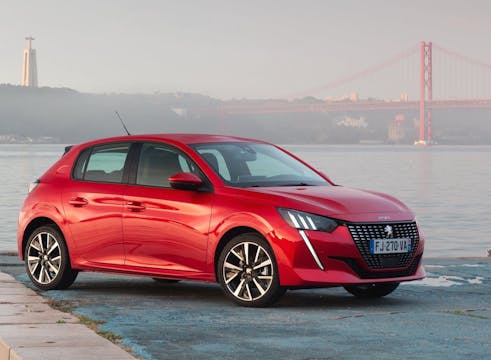
It’s only taken it twenty-odd years, but Peugeot finally has a baby hatch to rival the Gallic flair of the seminal, Pininfarina-designed 205 (see below). Any attempt to replicate this ’90s classic was doomed to fail and so it proved. The 206 and 207 were bulbous and piscine in their appearance, and the first-generation 208, with its weird C-shaped taillights, not much better. But the current 208 recaptures some of the 205’s charm and lightness of touch as much as is possible in a modern car.

Presenting a contemporary update on the trademark 205 C-pillar shape with a striking down-the-road graphic, it smooths the faceted, perfume-bottle look of the SUVs in Peugeot’s range to produce a more rounded, homogenous form.
It’s definitely a grower not a shower—another car I wasn’t totally sold on until I started seeing it on the road. Sadly there’s no GTi these days (blame emissions regulations, again) and the interior carries on another French tradition by being stylish but slightly odd.
In another demonstration of what can be done with a common platform, the 208 shares its under-garments with the Jeep Avenger.
Honorable mention: Honda e

From willfully French to “it couldn’t come from anywhere but Japan.” The Honda e does away with Japanese busyness and cluttered design for a simple, smooth, but technology-led look that contains hints of humanoid robot in its front and rear graphics. Available only as a rear-wheel-drive electric vehicle, the Honda leverages this layout to provide a turning circle worthy of a London black cab, making it perfect for the city-center assault course.

Another technology highlight is the camera mirror system. At first look it appears like a design solution in search of a problem, but in reality, the apparatus works very well and provides a benefit in both aero and reduction in wind noise.
The e might be small car, but like a lot of EVs, it’s not a cheap one. Where other OEMs have concentrated on range, Honda has gone in the opposite direction and designed for a premium experience. Although the interior rivals a Best Buy for sheer number of screens, the important stuff like HVAC and stereo retain hard controls. The range admittedly isn’t great, but this aesthetic could work just as well on the next Fit or Civic.
U.S.-market outliers like pickup trucks and muscle cars aside, there is nowhere near as much market differentiation across the world as there used to be. Increased development costs and coalescing tastes have seen to that. I’ve focused on specific cars that are not available in the U.S., rather than the sort of trim and model variations that forums like to argue over. Think of it as my revenge for your chucking our tea in Boston harbor all those years ago.
Check out the Hagerty Media homepage so you don’t miss a single story, or better yet, bookmark it.




















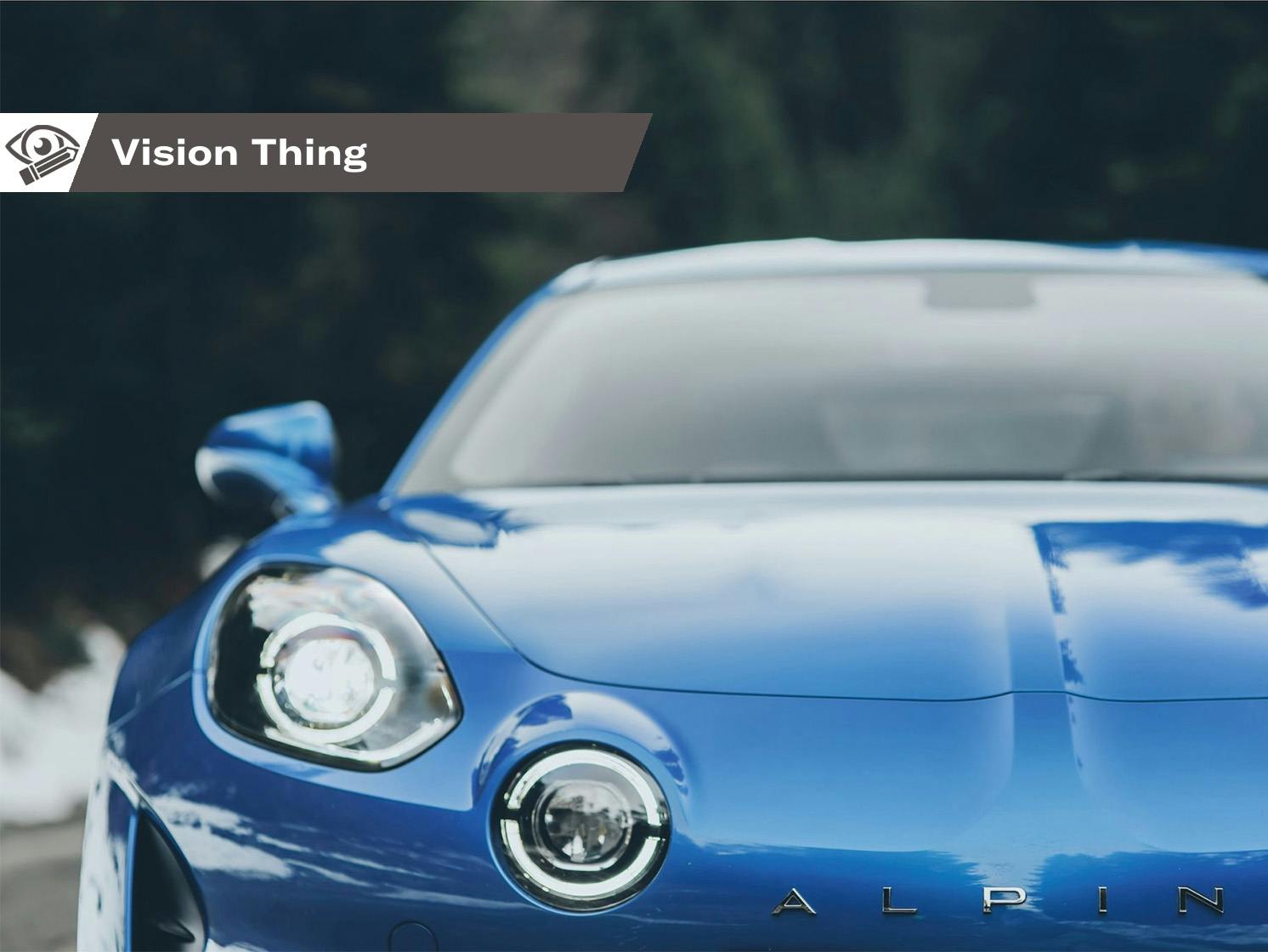
I am disappointed to see no mention of the car my son and I would love to import if only it were possible: the VW Polo GTI. The Polo was a darling and practical little fast hatch for a long time before they finally produced a GTI version. Now it’s a total winner. (And maybe the ID.3.) From some years ago I always wanted a Mercedes A110. Talk about efficient use of space.
Be Afraid……. Be Very Afraid….. That whoever titled & wrote this article was smoking & sniffing more than crack!!!
I unapologetically smoke cigarettes thank you. It’s about the only thing I have in common with the late lamented Setright!
I was tempted to include the Up! GTi, which is closest in spirit to the OG Mk1 Golf GTi. I get your sentiment, but the Up! Is a better looking car I think than the Polo (which has always been a poor relation to the Golf).
who made this list ? i would not park any one of them in my driveway let alone my shop
What is with all the SUV’s? I’m still confused why anyone would even want one. But they do seem too be pushing them down our throats.
One platform for all I guess.
I agree. I keep reading that there’s no demand for anything else. I doubt that.
I would take a 1961 Pontiac bubble top super duty
They still make nice wagons in Europe. That’s what I would like to see more of. It hasn’t all turned into SUV hell over there.
Point taken, but I wanted to show some things you don’t get stateside. A strong case could be made for the Volvo V90 Cross Country. Fabulous looking thing, but available in the US.
I have to agree with Hyper v6.. The Jeep now is a Fiat with a Jeep nameplate stuck on… A sad day for Jeep..or Feep? Period!!!
It shares a platform with Peugeot/Citroen (and Opel) not Fiat.
Oddly enough the 1990 205 GTI looks the best to me. Must be a age thing.
Meh
I find it a bit absurd that Volkswagen, the company that basically invented the camper van, has never sold its “California” camper van in the state it’s named after or the rest of the United States. Based on the number of 75- 150K Sprinter, Transit and ProMaster conversions I see on the road I think it could have sold a few here.
Chicken tax I expect, and it is VERY expensive. But as you say that doesn’t stop the others so who knows.
There are ways around the Chicken Tax. Mercedes does assembly stateside to get the Sprinter in.
I’m on my second VW Westfalia (3rd vanagon). It’s a 1989 and with luck I’ll get another slow, noisy and hot 100K miles out of it. There is nothing on the US market with the combination of sheer practicalities that the VW RV platforms provide. I eat my heart out each time a new ‘California’ is introduced – the last as I recall actually with a big press event in southern California, just to rub salt into the wound. Give us a break, VW.
“A Jeep that’s not available in the U.S.?” What is this world coming to?
You’re kidding!?! Right? Not one is on my list.
Volkswagen Touraeg
A friend of mine lives in Ireland and has been buying Renault Sanderos for a few years now but on going to the dealer for the latest model she was persuaded to buy a Dacia instead, and because it was a lot cheaper she bought one, and is as happy as Larry with it. It doesn’t have all the “refinements” of the Renault but for the money she has saved she is glad that she did the deal. So far she has done over 12,000m and so far, so good.
I really wish we got the Mercedes A-class hatchback in the US. I’d buy it.
VW Amorak pickup? Anyone? I know VW quality is 💩💩💩/5, and longevity 5💩/5, but still, Amorak is a cool whip. We must have struck a nerve w VW excecs somewhere along the line to where they see the US market as a dumping ground now. Zee US idiots vill buy zeze peezes of Sheiß, even ven zey break after 60k miles. “Vay do ve only have 5% share of US Markt, herr boss?” Ve don’t ask qvestions Klaus, just keep building ze Scheiss zat breaks, und breaks badly!